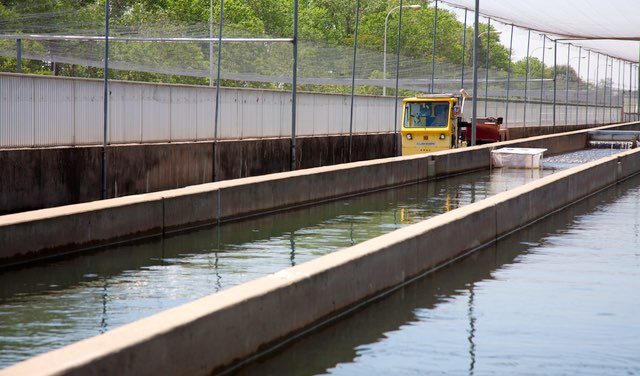From Sportfishing
Fish Report for 2-21-2017

Endangered fish among the evacuees of Oroville Dam crisis
2-21-2017
Tara Lohan
DAYS BEFORE NEARLY 200,000 people downstream of Lake Oroville were ordered to evacuate because of problems with two spillways at the dam, there were millions of other evacuees – residents of the Feather River Fish Hatchery.
Last week, rising water levels at Lake Oroville caused dam operators to divert water to its spillway, which runs to the Feather River. High water flows and the spillway diversions increased the turbidity in the river, which threatened the health of juvenile Chinook salmon and steelhead eggs being raised at the hatchery, said Howard Brown, Sacramento River Basin Chief of NOAA Fisheries.
Some 5 million juvenile salmon were scooped up into nets and loaded into a transport truck. It drove them about 10 miles (16km) away to the Thermalito Annex Hatchery, which uses well water instead of river water.
But not all the fish at the hatchery could be moved. Because of space constraints, about 2 million juvenile salmon were left behind, and all the steelhead eggs had to remain because they were too fragile to move.
“If you put very turbid, murky water on top of eggs it can smother them and kill the eggs,” said Brown, “so they were put on an alternate water supply that came through a fire hydrant and the water was run through a charcoal filtration system.” The filtration system removed chlorine and other things in the water that could affect the fish.
Why all the trouble for some fish? Spring-run Chinook salmon and steelhead are both listed as threatened under the Endangered Species Act. “Their status has declined significantly over the years and their viability is at risk,” said Brown. “Especially coming off the drought, populations of salmon and steelhead declined significantly. It’s very important that we do everything we can to maintain their health and survival, which helps contribute to their long-term viability and minimize extinction risk.”
The hatchery also raises fall-run Chinook salmon, which don’t have protective federal status but are an important fishery resource, ecologically – they make up 30 percent of the state’s fall-run Chinook population. They are also economically important for recreational and commercial fisherman, added Brown.
Hatchery fish weren’t the only ones impacted by the high water flows. Fish living in the wild can benefit from them, however. When floodplains like those in the Yolo and Sutter bypasses are inundated, it creates critical habitat and good food sources that help increase the survival rate of the fish. Where turbid water threatens the health of fish in hatcheries, it actually increases their chance for survival in the wild if natural floodplains remain, by giving them extra cover to hide from predators.
While Brown said that staff are closely monitoring the hatchery fish and all seem to be doing well, they also expect that the high river flows could translate into higher survival rates for wild fish compared with the low-water conditions they’ve endured during the previous drought years. “It’s a very big plus,” he said.
This article originally appeared on Water Deeply, and you can find it here. For important news on water sustainability in California and the American West, you can sign up for the Water Deeply email list.
Tara Lohan is managing editor of Water Deeply. She tweets from @taralohan and lives in San Francisco. You can reach her at tara@newsdeeply.org
< Previous Report Next Report >

Website Hosting and Design provided by TECK.net